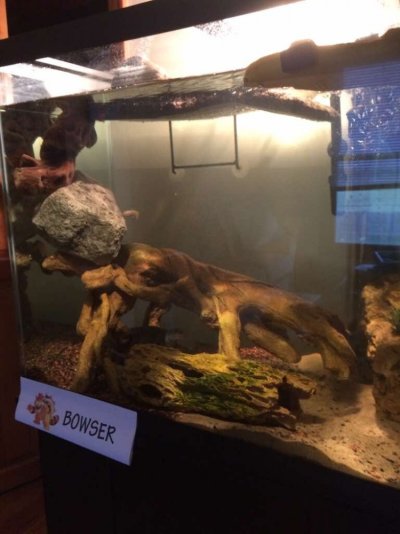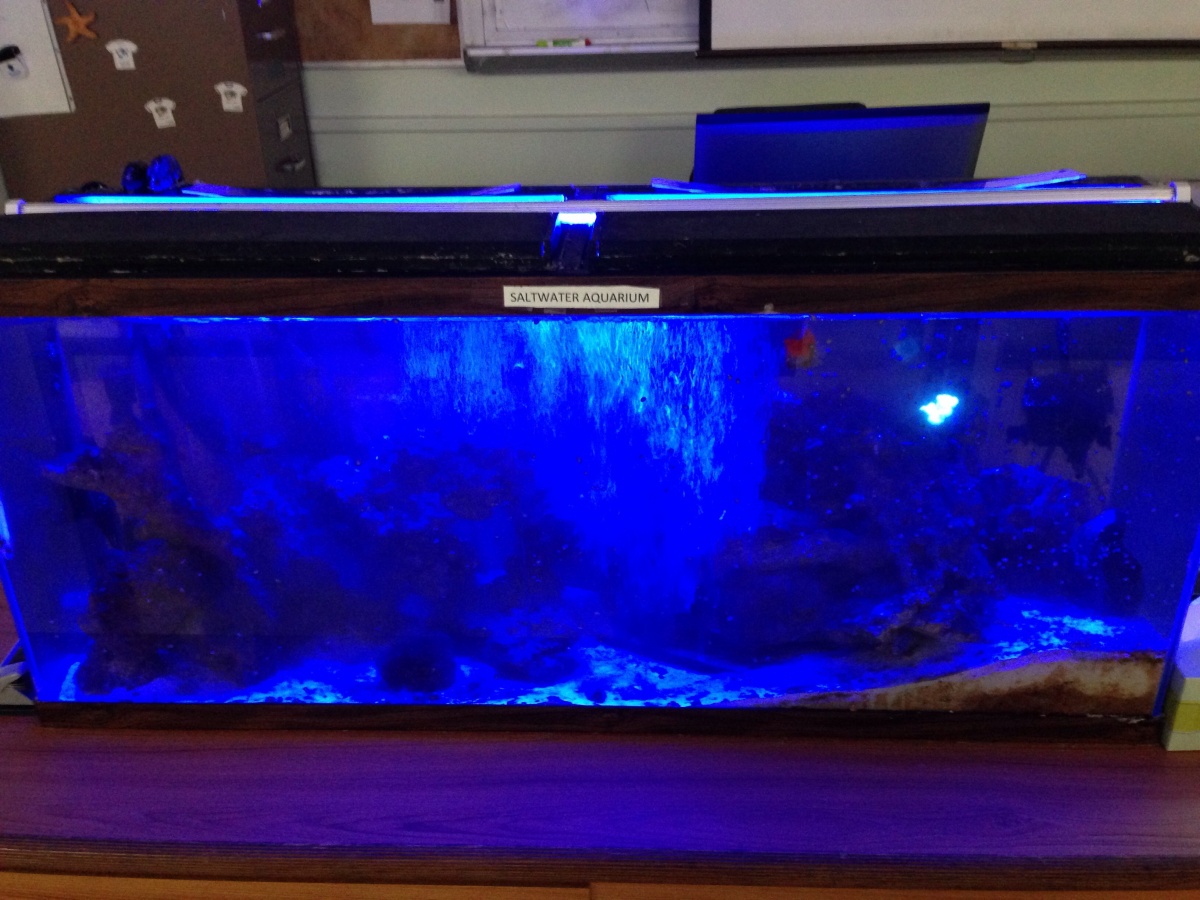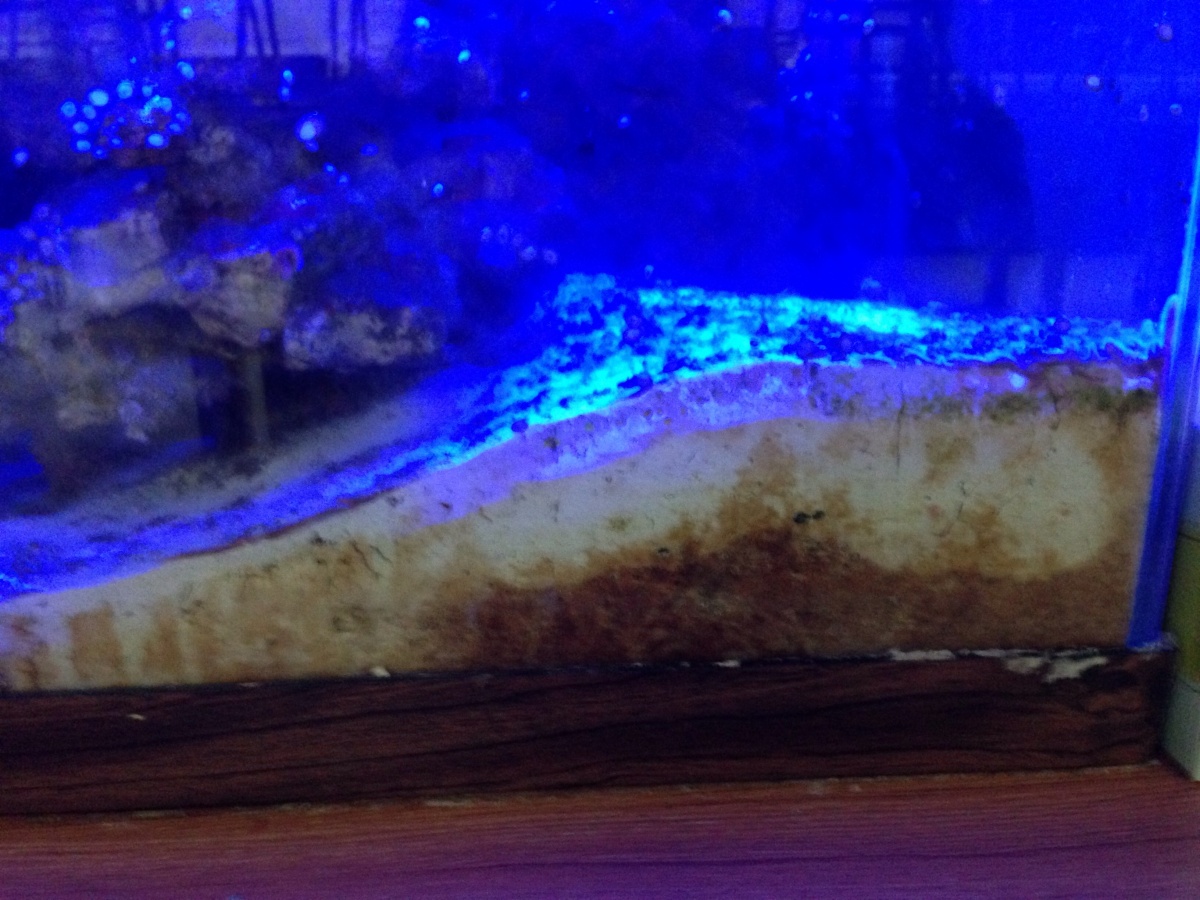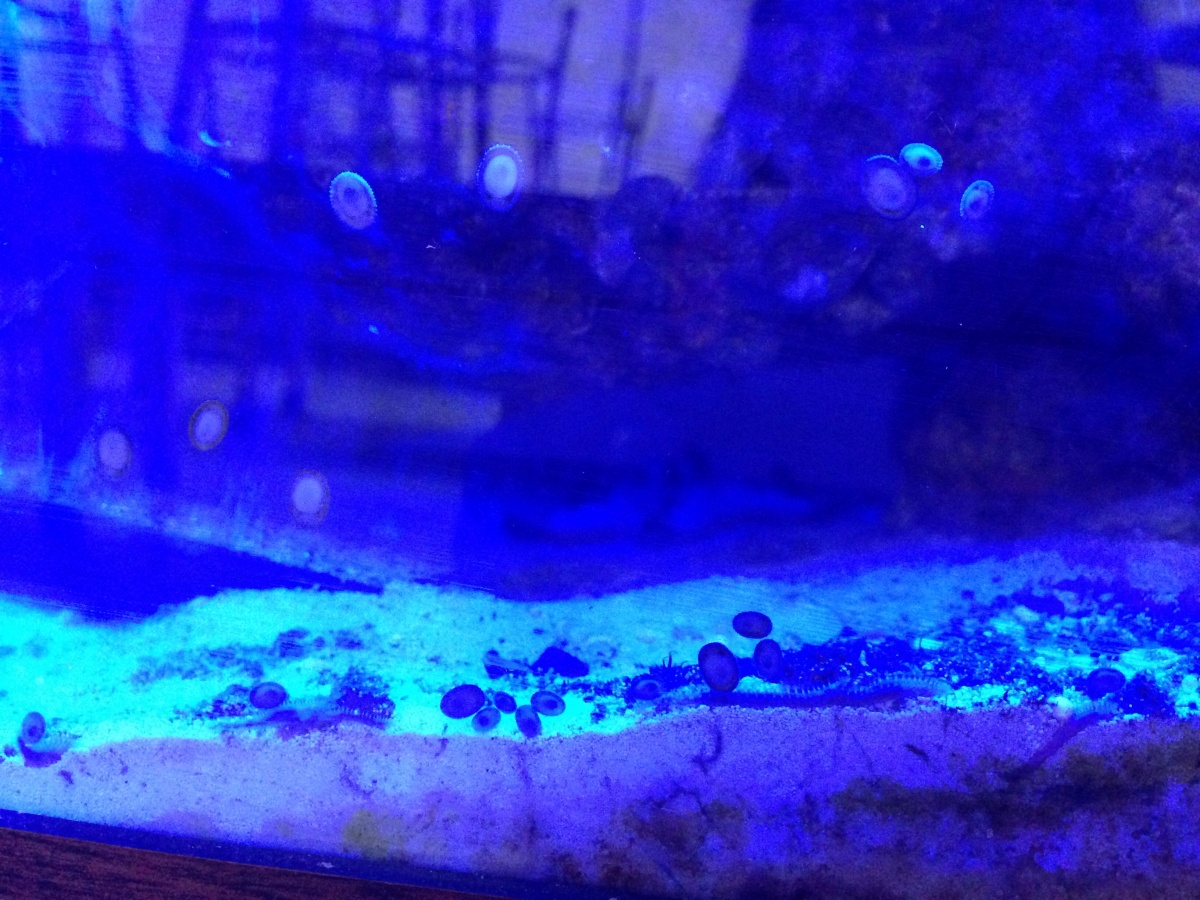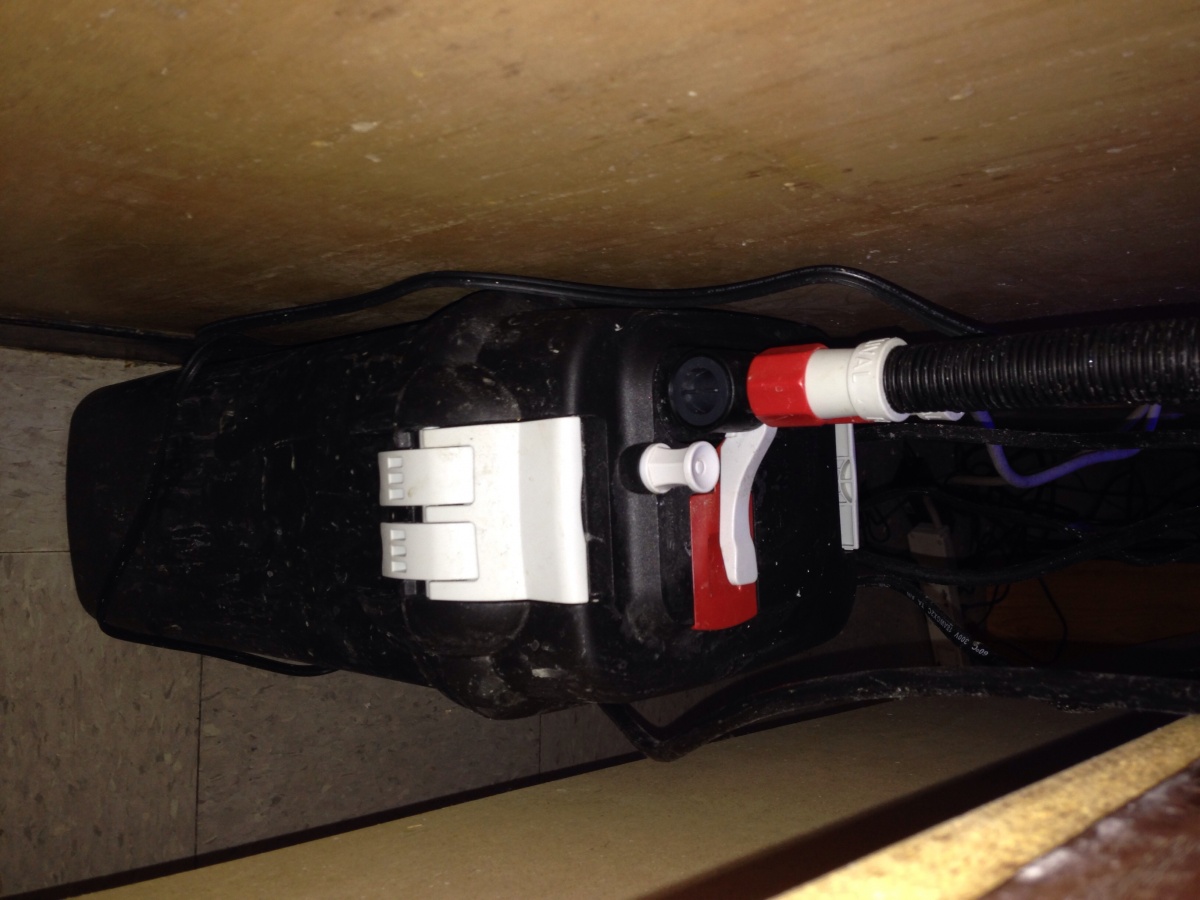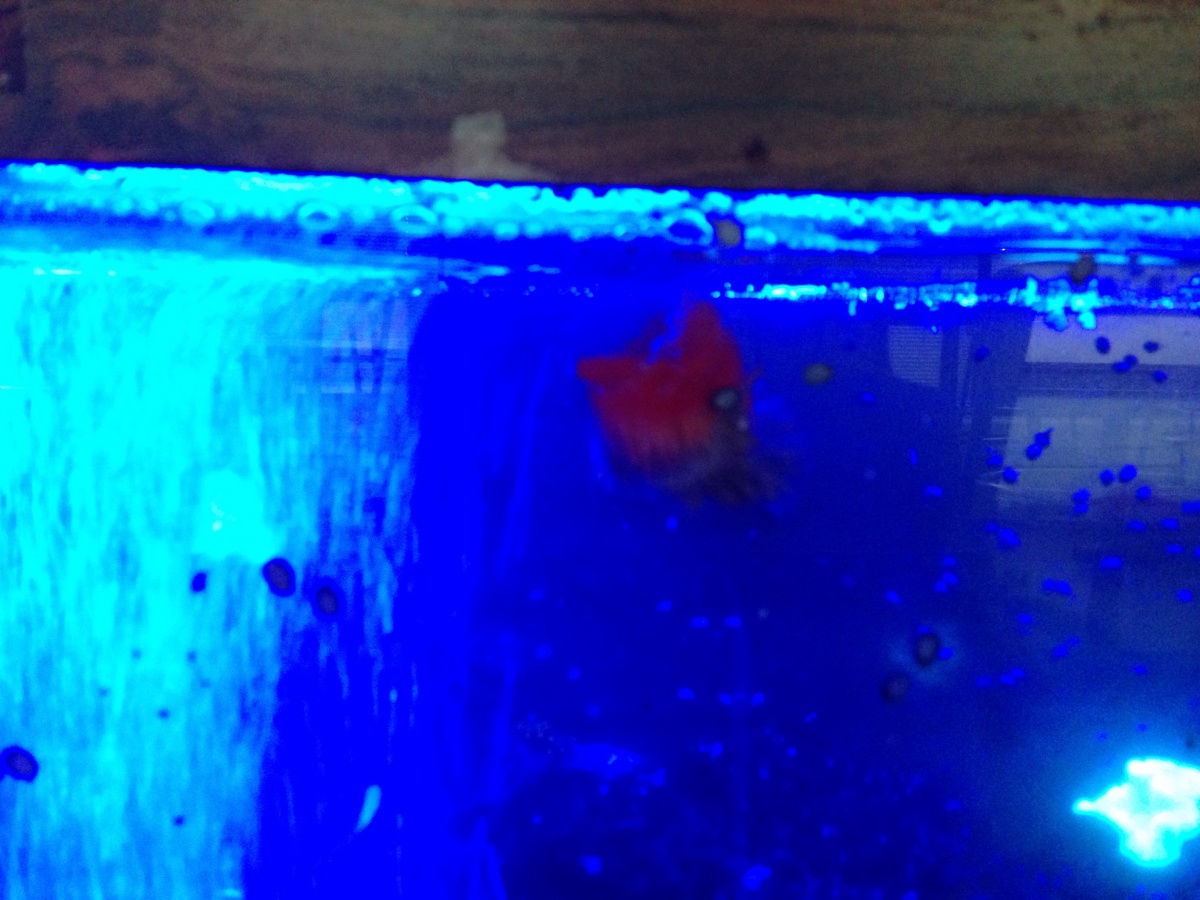CaptainMogly
Aquarium Advice Apprentice
- Joined
- Jan 10, 2015
- Messages
- 15
I have researched a lot about salt water tanks recently (something I do not have personal experience with) in order to help save my biology teacher's aquarium. Please read fully, or if you would like me to get to the point, scroll down...
My biology teacher has multiple animals in his classroom (bearded dragon, crested gecko, corn snake, and iguana. As well as a freshwater tank and a salt water tank. He also had two rats that recently went to a loving home!).
I have recently taken over the care of his 50 gallon turtle tank. The turtle (a yellow bellied slider) had no appetite, was shedding his shell due to poor water conditions, had no place to dry, and has no UV light.
I have invested time and money to save the turtle. (having dedicated over six hours to doing a 75-90% water change) After this water change and some time under a neighboring snake's UV light, he had a very improved attitude and even ate one of the feeder fish! This is a big step up from his previous conditions, and while the tank is still overcrowded with goldfish (hopefully the turtle eats most of the feeder fish in the tank!), this is a much better habitat then he had.
I have experience with turtles and experience with freshwater fish as well as aquarium plants.
So to get to the point...I need advice on what I should do to help his 100 gallon, long salt water aquarium. At the moment it is stocked with:
1 starfish (chocolate chip maybe?)
2-3 clown fish
1 Royal Gramma
1 shrimp (unknown species)
1-2 other fish that stay hidden
1 Blue tang that recently died (had a bacterial infection I believe and discoloration around both of its eyes)
100+ baby snails
3-5 big snails
25+ bristle worms (fairly small)
1 white sponge moss (???)
1 sea anemone ~ which is the reason I started this escapade, because when sea anemones become stressed they detach and free float...his is currently attached to the glass after floating for two days and it makes me upset because I love anemones.
He does not have anything to test parameters. (probably one of the first questions I would be asked...as well as: ) I do not know what type of filtration/heating system he is using.
He does have two power heads that are severely clogged with algae, an over the back and into a pump type filter (I have no experience with the sort) and a long air stone. (which after research I found is the reason that he has salt creep) He has two long blue lights, later this week I can find more information about the filters and power heads he is using.
His substrate is sand (which I believe he has never cleaned), and on one side where it is at a higher depth then the rest, there is bubbles of air forming under the sand. He has large rocks in the tank that are covered mostly by slimy-algae.
My question being, what would be the appropriate way to do a full cleaning of the tank, remove the snails/bristle worms, and make this aquarium hospitable for his fish. I have no experience with salt water tanks, so full explanations would be very helpful. I have done a lot of research but haven't been able to find very much regarding my circumstances.
Any help is greatly appreciated!!!
~CaptianMogly
My biology teacher has multiple animals in his classroom (bearded dragon, crested gecko, corn snake, and iguana. As well as a freshwater tank and a salt water tank. He also had two rats that recently went to a loving home!).
I have recently taken over the care of his 50 gallon turtle tank. The turtle (a yellow bellied slider) had no appetite, was shedding his shell due to poor water conditions, had no place to dry, and has no UV light.
I have invested time and money to save the turtle. (having dedicated over six hours to doing a 75-90% water change) After this water change and some time under a neighboring snake's UV light, he had a very improved attitude and even ate one of the feeder fish! This is a big step up from his previous conditions, and while the tank is still overcrowded with goldfish (hopefully the turtle eats most of the feeder fish in the tank!), this is a much better habitat then he had.
I have experience with turtles and experience with freshwater fish as well as aquarium plants.
So to get to the point...I need advice on what I should do to help his 100 gallon, long salt water aquarium. At the moment it is stocked with:
1 starfish (chocolate chip maybe?)
2-3 clown fish
1 Royal Gramma
1 shrimp (unknown species)
1-2 other fish that stay hidden
1 Blue tang that recently died (had a bacterial infection I believe and discoloration around both of its eyes)
100+ baby snails
3-5 big snails
25+ bristle worms (fairly small)
1 white sponge moss (???)
1 sea anemone ~ which is the reason I started this escapade, because when sea anemones become stressed they detach and free float...his is currently attached to the glass after floating for two days and it makes me upset because I love anemones.
He does not have anything to test parameters. (probably one of the first questions I would be asked...as well as: ) I do not know what type of filtration/heating system he is using.
He does have two power heads that are severely clogged with algae, an over the back and into a pump type filter (I have no experience with the sort) and a long air stone. (which after research I found is the reason that he has salt creep) He has two long blue lights, later this week I can find more information about the filters and power heads he is using.
His substrate is sand (which I believe he has never cleaned), and on one side where it is at a higher depth then the rest, there is bubbles of air forming under the sand. He has large rocks in the tank that are covered mostly by slimy-algae.
My question being, what would be the appropriate way to do a full cleaning of the tank, remove the snails/bristle worms, and make this aquarium hospitable for his fish. I have no experience with salt water tanks, so full explanations would be very helpful. I have done a lot of research but haven't been able to find very much regarding my circumstances.
Any help is greatly appreciated!!!
~CaptianMogly

